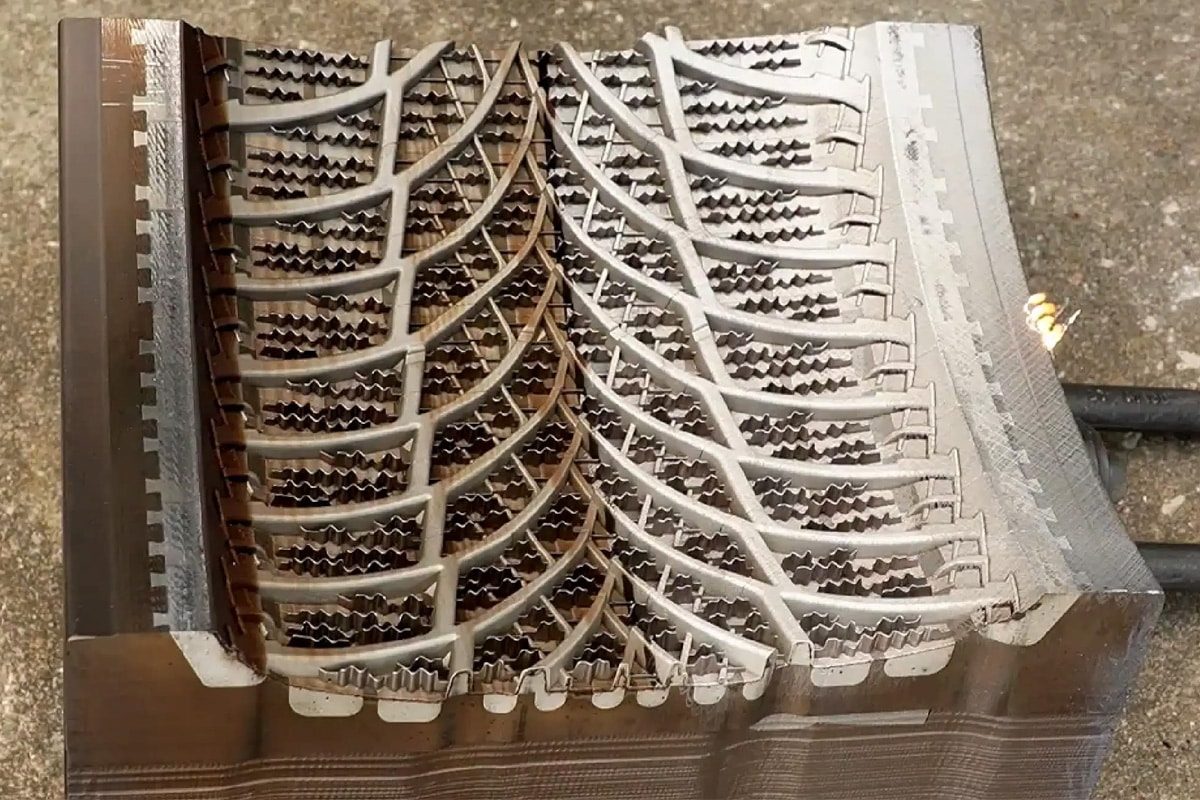
Zastosowania czyszczenia laserem impulsowym
Pulse laser cleaning is an advanced and efficient surface treatment technology that uses short-pulse high-energy laser beams to irradiate the surface of the workpiece to effectively remove impurities such as rust, oil, coating, oxide layer, residue, etc., on the surface of metal or non-metallic materials. The laser instantly heats and vaporizes or peels off pollutants to achieve the purpose of precise cleaning. Compared with traditional sandblasting, chemical cleaning, or ultrasonic cleaning, pulse laser cleaning is a non-contact, highly selective, non-consumable, and non-damaging surface cleaning method that can complete high-efficiency cleaning in a very short time while ensuring that the surface of the substrate is not damaged.
This technology not only has the advantages of high-precision control, environmental friendliness, safety, and reliability, but also has strong multifunctional adaptability and can be used in a variety of scenarios such as complex structures, precision parts, and sensitive materials. At present, pulse laser cleaning has been widely used in many high-end industries such as automobile manufacturing, aerospace, electronics and electrical, medical equipment, mold processing, and cultural relics restoration, bringing significant value to enterprises in improving production efficiency, reducing maintenance costs, and achieving green manufacturing.
Spis treści
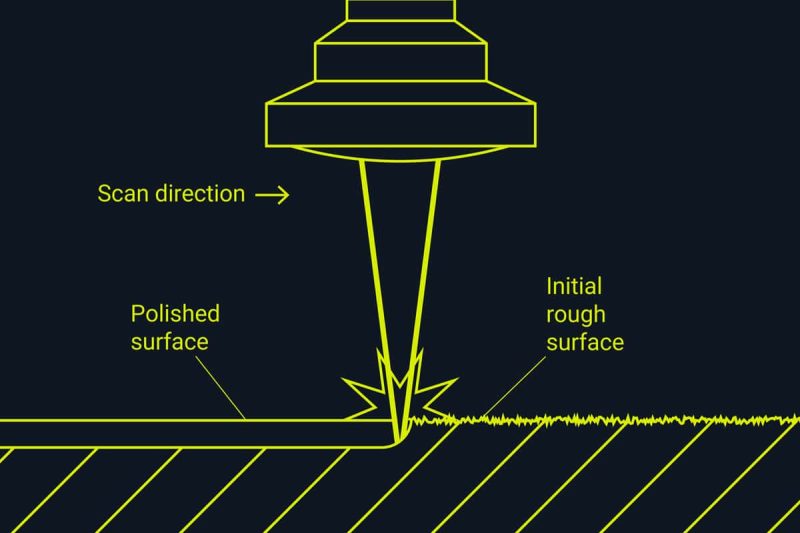
How pulsed laser cleaning works
Pulse laser cleaning is an advanced surface treatment technology based on the principle of laser-matter interaction. The basic process is to use high-energy-density laser pulses to irradiate the contaminated or covered surface, causing the surface contamination layer to heat up and expand violently in a very short time, and finally to be peeled off, vaporized, or crushed and removed.
The duration of each laser pulse is extremely short, usually in the nanosecond (ns) or even picosecond (ps) order, and the heat is only concentrated in the extremely thin surface area, and it is almost not conducted deep into the substrate, thus effectively avoiding thermal damage or structural changes to the parent material. This enables pulse laser cleaning to not only accurately remove contaminants, but also to protect the surface integrity and performance of the cleaned workpiece to the greatest extent.
In actual applications, the operator can adjust the laser power, pulse width, repetition frequency, scanning speed, and other parameters according to different types of contamination, material properties, and cleaning requirements to achieve precise and selective treatment of the cleaning area. Whether it is large-area cleaning or fine cleaning of small areas, pulse lasers can be flexibly adapted to ensure efficient, controllable, and non-destructive cleaning effects.
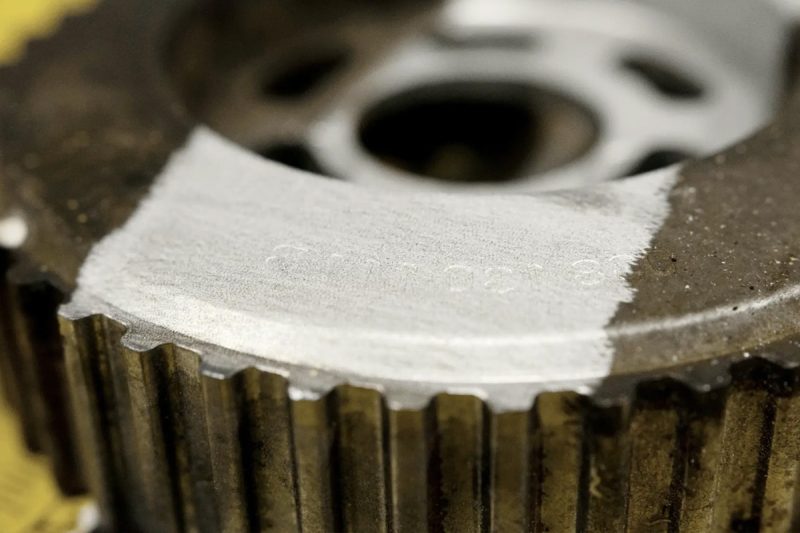
Advantages of pulsed laser cleaning
As the demand for efficient and environmentally friendly cleaning technologies in the manufacturing industry continues to grow, pulsed laser cleaning has been widely used in various fields due to its excellent performance. Compared with traditional cleaning methods, pulsed laser cleaning has shown obvious advantages in multiple dimensions and has become the preferred solution for many high-end application scenarios.
Non-contact process: Pulsed laser cleaning adopts a non-contact operation method, using high-energy laser pulses to directly act on the surface of the material without any mechanical contact. Compared with traditional cleaning methods, this method avoids physical friction, surface scratches, or material loss, effectively protects the original microstructure and mechanical properties of the workpiece, and is especially suitable for application scenarios with extremely high surface quality requirements.
Precision and control: Pulsed laser cleaning has excellent focusing performance, which can accurately control the laser beam within the micron range, and the cleaning area is precisely controllable. Whether it is processing complex geometric structures or tiny detail areas, high-precision operations can be achieved. At the same time, users can flexibly adjust laser parameters according to different materials and contaminant types, and finely control the cleaning energy and depth to ensure consistent and repeatable cleaning effects.
Environmental benefits: Unlike traditional cleaning methods that use chemicals or sandblasting, pulse laser cleaning does not require the addition of any chemicals, nor does it produce wastewater or harmful exhaust gas, truly achieving zero pollution emissions. This green and environmentally friendly feature meets the strict global requirements for sustainable manufacturing and environmentally friendly production today, helping companies achieve clean production goals.
Versatility: Pulse laser cleaning technology is highly adaptable and can be applied to almost all surfaces of different materials such as metal, ceramics, stone, glass, rubber, etc., without being restricted by materials. Whether it is rust removal, oxide layer removal, oil cleaning, or surface pretreatment, laser cleaning can respond flexibly to meet diverse cleaning needs and enhance the overall application value.
Efficiency: Pulse laser cleaning has a high energy density output, can quickly peel off the surface contamination layer, and significantly shorten the cleaning time. At the same time, the equipment can be easily integrated with the automated production line to achieve continuous operation, greatly improve cleaning efficiency and production capacity, and meet the stringent requirements of mass production environments for beats and construction periods.
Safety: Since pulse laser cleaning is a non-contact operation, it avoids problems such as wear and scratches caused by traditional mechanical cleaning, and does not require the use of chemical agents, which greatly reduces the health risks of operators. Laser equipment operates stably, and with the safety protection system, it can ensure the safety of equipment and personnel in long-term use and reduce overall operating costs.
Pulse laser cleaning is rapidly becoming the preferred technology for surface treatment in various industries due to its many advantages such as non-contact, precise controllable, green and environmentally friendly, multi-functional adaptability, efficient cleaning and safety and reliability. For companies pursuing efficient production and sustainable development, pulse laser cleaning is undoubtedly an important boost to enhance competitiveness.
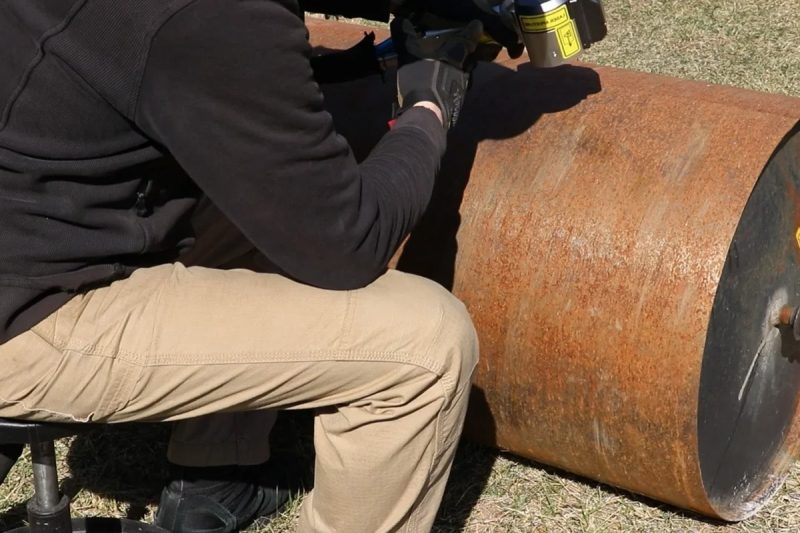
Industrial application of pulsed laser cleaning
With the continuous advancement and maturity of laser technology, pulsed laser cleaning has been widely used in many industrial fields due to its outstanding advantages, such as non-contact, non-damage, precise controllability, etc. Unlike traditional chemical cleaning, sandblasting cleaning, and other methods, pulsed laser cleaning not only improves cleaning efficiency and quality but also effectively reduces environmental pollution and production costs, becoming an important choice for upgrading surface treatment processes in various industries.
Automotive industry
Pulsed laser cleaning plays a significant role in the field of automobile manufacturing and maintenance, and is widely used in engine parts surface degreasing and rust removal, welding pretreatment, weld cleaning and tire mold maintenance. Laser cleaning can effectively remove oxides and impurities on the surface of the workpiece, improve welding quality, extend the service life of components, and ensure the reliability of subsequent coating or bonding processes, thereby further improving the overall process level of automobile manufacturing.
Aerospace industry
In the field of aerospace, parts have extremely high requirements for quality and reliability. Pulsed laser cleaning is widely used in tasks such as composite surface treatment, oxide layer removal, and coating stripping. Laser technology can accurately remove micron-level impurities and contaminants without damaging the substrate, ensuring that aircraft structural parts, fuselage materials, and engine components meet the highest performance requirements, thereby improving flight safety and equipment stability.
Przemysł elektroniczny
For the electronics industry, pulsed laser cleaning is particularly suitable for high-precision, ultra-micro-scale cleaning operations. For example, in the circuit board manufacturing process, laser cleaning can remove tiny particles, oxide layers, and organic contaminants in the process of pad cleaning, chip packaging surface rust removal, and paint removal, while maintaining the integrity and functionality of sensitive electronic components, greatly improving production yield and finished product reliability.
Ochrona dziedzictwa kulturowego
In the field of cultural relics protection and restoration, pulsed laser cleaning has shown unique advantages. By precisely controlling laser parameters, contaminants and aging substances on the surface of precious cultural relics such as stone carvings, bronzes, and murals can be gently removed without destroying the original materials or artistic details. This non-invasive cleaning method has greatly promoted the scientificity and sustainability of cultural heritage restoration work.
Manufacturing and Processing Industry
In various manufacturing and processing industries, pulsed laser cleaning is widely used in equipment refurbishment, mold maintenance, component surface pretreatment and post-treatment, and other process links. By removing oil, rust, coating residues, etc., the processing quality and surface performance of the workpiece can be improved, while the service life of production equipment and tools can be extended, maintenance costs can be reduced, and enterprises can achieve production process optimization and efficiency improvement.
Overall, pulse laser cleaning is becoming an important direction for the development of industrial cleaning technology with its high efficiency, environmental protection, precision, and non-destructive characteristics. Whether it is traditional manufacturing or high-precision industry, pulse laser cleaning has shown a wide range of application prospects and significant process value. With the further upgrading of laser equipment technology, pulse laser cleaning will play a greater role in more subdivided fields in the future, helping the industry move towards a higher quality development stage.
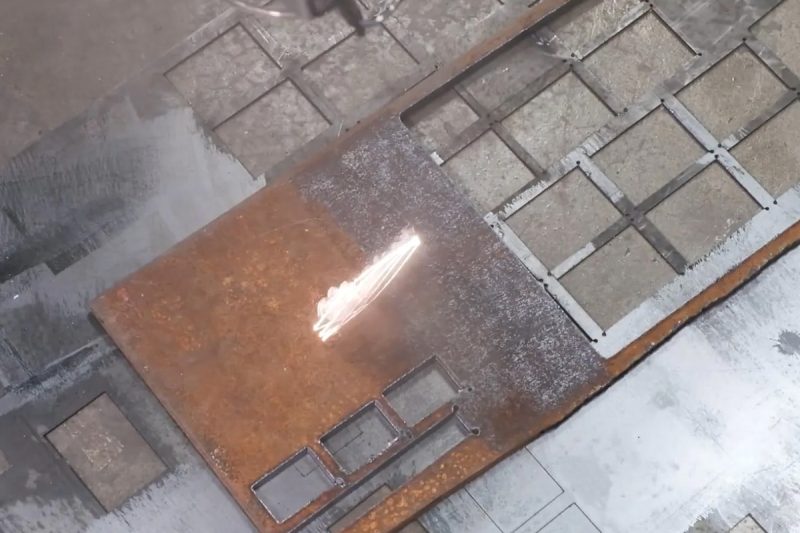
Professional application of pulsed laser cleaning
As industrial applications continue to be subdivided, the requirements for cleanliness, precision, and environmental protection of surface treatment technology are also constantly increasing. Pulse laser cleaning, with its non-contact, pollution-free, efficient, and controllable characteristics, has demonstrated unique process advantages in multiple professional fields. Especially in high-demand industries such as medical care, food safety, marine corrosion protection, and energy development, pulsed laser cleaning technology has become an important means to promote the upgrading of industry standards.
Medical device manufacturing
In the field of medical devices, surface cleanliness is directly related to the safety of use and the health of patients. Pulse laser cleaning can efficiently remove tiny pollutants, residual particles, and organic matter on the surface of surgical instruments, implantable devices, etc., and will not introduce any chemical residues, which greatly meets the strict standards of the medical industry for sterility, no residue, and high cleanliness. In addition, the laser cleaning process can be automated, which helps to improve production efficiency and product consistency.
Food and beverage industry
In the production process of food and beverages, the sanitation of the equipment surface directly affects product safety and quality. Pulse laser cleaning can effectively remove pollutants such as carbon deposits, oil stains, and plaque on the surface of production equipment, avoiding the potential contamination of food by chemical residues in traditional cleaning methods. The water-free and chemical-free laser cleaning process not only ensures the high cleanliness standards of the production environment but also responds to the industry’s environmental protection needs for sustainable development.
Marine industry
In the marine environment, the surface of the equipment is exposed to salt spray and moisture for a long time, which it very easy to rust. Pulse laser cleaning can effectively remove rust and attachments on the surface of the hull, offshore platform, and drilling equipment without damaging the material matrix. By removing the oxide layer and corrosive substances, the corrosion resistance of the material can be effectively improved, the service life of the equipment can be extended, the maintenance and replacement costs can be reduced, and the operational efficiency can be improved.
Oil and gas industry
The oil and gas industry has extremely high requirements for the stable operation of equipment and the safety of pipelines. Pulse laser cleaning can accurately remove rust, oil, and sediments in the inner wall of the oil pipe, equipment maintenance, weld processing, and other links, and restore the integrity and functionality of the equipment surface. The laser cleaning process is fast and efficient, which reduces the potential damage to the equipment caused by traditional cleaning and helps to improve the safety and reliability of the oil and gas transportation system.
Renewable energy field
In renewable energy industries such as solar and wind energy, the cleaning treatment of the equipment surface directly affects energy efficiency and system life. Pulse laser cleaning is widely used in processes such as solar panel frame degumming, wind turbine blade mold cleaning, and surface oxide layer treatment. Efficient and environmentally friendly cleaning methods can not only ensure the efficient operation of green energy equipment but also comply with the environmental protection concept of sustainable development in the industry, and promote the global clean energy transformation.
Overall, pulse laser cleaning technology is becoming an indispensable surface treatment solution in professional fields such as medical care, food, and energy with its precise, efficient, and green characteristics. With the continuous improvement of industry standards and the increasing requirements for sustainable development, pulse laser cleaning will play a more important role in more subdivided fields, helping various industries achieve high-quality, safe, and environmentally friendly production and operation, and maintenance goals.
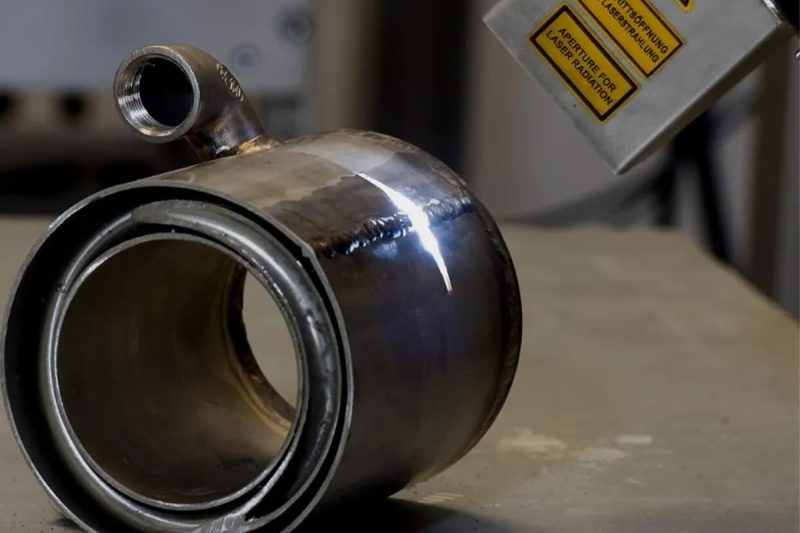
Technical considerations and challenges
Although pulsed laser cleaning technology has been widely used in various industries due to its advantages such as high efficiency, environmental protection and precision, there are still a series of technical considerations and challenges that need to be focused on during actual deployment and operation. To achieve the best cleaning effect, ensure the stability of equipment operation, and maximize the return on investment, a comprehensive evaluation and reasonable planning must be carried out from multiple dimensions.
Laser parameter matching
The effect of pulsed laser cleaning is closely related to the various parameters of the laser generator, such as pulse frequency, single pulse energy, energy density, pulse width, and spot size. Different contaminants have different adhesion characteristics, thickness, and tolerance of the target substrate. It is necessary to accurately adjust the laser parameters to achieve the ideal effect of thoroughly removing dirt without damaging the material surface. Therefore, before the project is implemented, detailed process testing and parameter optimization are usually required to ensure process adaptability and stability.
Możliwość dostosowania materiału
There are significant differences in the absorption efficiency of laser energy by various materials. For example, metal surfaces have a high absorption rate for lasers, while some plastics, ceramics, or composite materials may reflect more energy, increasing the difficulty of cleaning. According to the physical properties of different materials, it is necessary to develop customized cleaning strategies, including selecting appropriate wavelengths, controlling laser scanning paths, setting adaptive energy output modes, etc., to ensure that thorough cleaning is achieved without causing problems such as material discoloration, ablation, or cracking.
Equipment investment cost
The initial purchase cost of pulsed laser cleaning equipment, especially high-power, ultra-short pulse (such as nanosecond, picosecond) laser generators, is relatively high, covering the equipment body, supporting cooling systems, optical components, and automatic control systems. However, thanks to its characteristics of no consumables, low maintenance, and long service life, from a medium- and long-term operation perspective, pulsed laser cleaning can significantly reduce daily production line expenses and downtime maintenance time, and has a good return on investment. For mass production or high-precision manufacturing companies, the long-term benefits are particularly obvious.
Szkolenie operatorów
To ensure the safe and efficient operation of laser cleaning equipment, operators must undergo professional training and master the basic equipment operation procedures, laser radiation protection knowledge, and emergency disposal measures. Especially when it comes to high-energy density laser applications, it is crucial to wear protective equipment correctly and comply with standard operating procedures (SOPs). At the same time, being familiar with the setting and adjustment of cleaning process parameters for different materials can also help improve production efficiency and avoid potential quality problems. Therefore, systematic personnel training and continuous skill improvement are important guarantees for the successful implementation of laser cleaning projects.
In summary, pulse laser cleaning technology shows broad prospects in industrial applications, but in the process of introduction and application, it is necessary to comprehensively consider factors such as process parameter matching, material adaptability, equipment investment and operation management. Through scientific planning and professional execution, not only can the process advantages of pulse laser cleaning be fully utilized, but also the investment benefits of the project can be maximized, helping enterprises achieve the goal of high-quality and sustainable development.
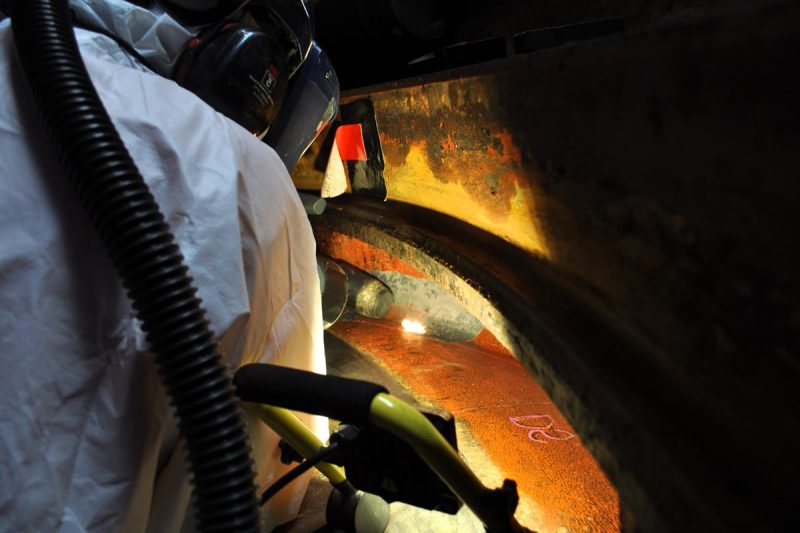
Podsumować
With the continuous improvement of global industrial production standards and increasingly stringent green environmental regulations, traditional chemical cleaning, sandblasting, and other processes are gradually being eliminated due to their high environmental pollution and material damage. Under this trend, pulsed laser cleaning has rapidly emerged as an emerging mainstream technology in the field of industrial cleaning with its outstanding advantages of non-contact, pollution-free, high precision, and high efficiency.
Pulsed laser cleaning can not only achieve efficient decontamination of the surfaces of various substrates such as metals, ceramics, and composite materials, but also protect the original structure of the substrate to the greatest extent, greatly extending the service life of equipment and components. At the same time, laser cleaning does not require the use of chemicals and does not produce secondary pollution, which perfectly meets the requirements of contemporary manufacturing for sustainable development and environmental compliance. Whether it is heavy industry, electronic manufacturing, aerospace, or medical equipment, cultural heritage protection and other fields, pulsed laser cleaning technology has shown extremely high application value and development potential.
At AccTek Laser, we focus on providing high-performance pulsed laser cleaning machines to global customers. Our product line covers a variety of models with different power levels and adjustable pulse parameters, which are widely adapted to various complex cleaning needs. Through continuous innovation and strict quality control, our laser cleaning system has won high recognition from customers at home and abroad in terms of stability, cleaning effect, and ease of operation.
If you are looking for an efficient, reliable, and technologically advanced pulse laser cleaning solution, we sincerely invite you to learn about AccTek Laser’s professional products and customized services. Please feel free to Skontaktuj się z nami for detailed technical information, application cases, and one-on-one cleaning test support, so that we can help you upgrade your industry and achieve sustainable development.
Informacje kontaktowe
- [email protected]
- [email protected]
- +86-19963414011
- Nr 3 Strefa A, strefa przemysłowa Lunzhen, miasto Yucheng, prowincja Shandong.
Uzyskaj rozwiązania laserowe
